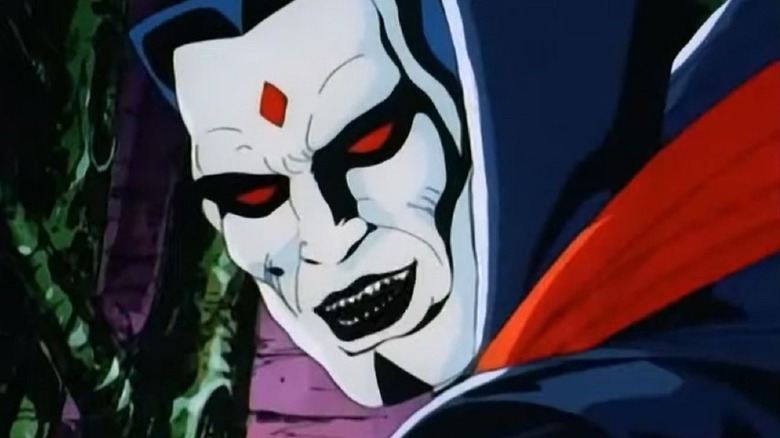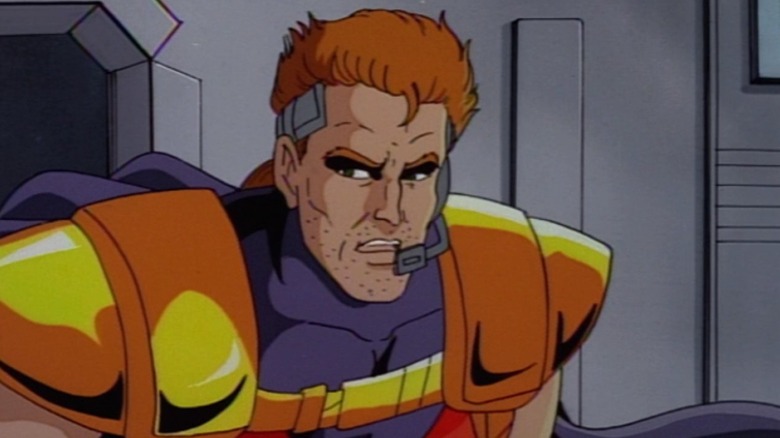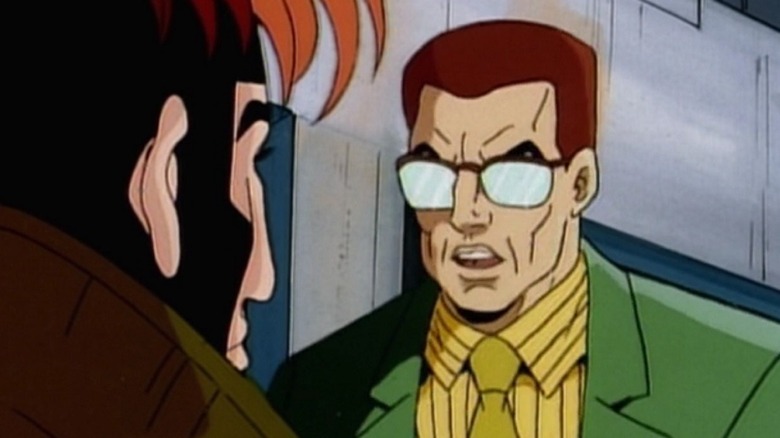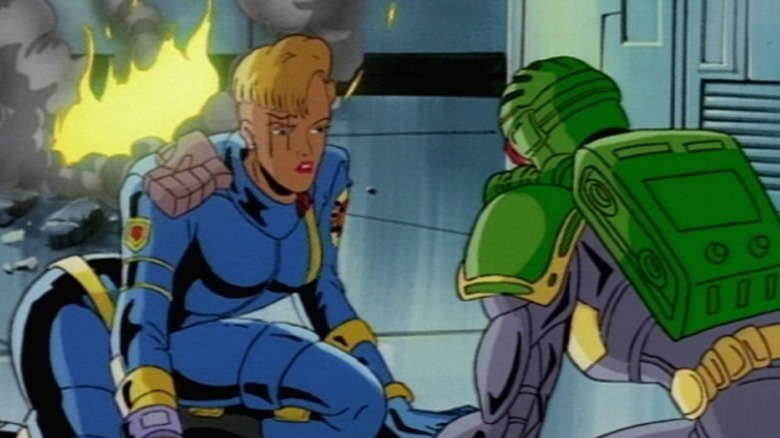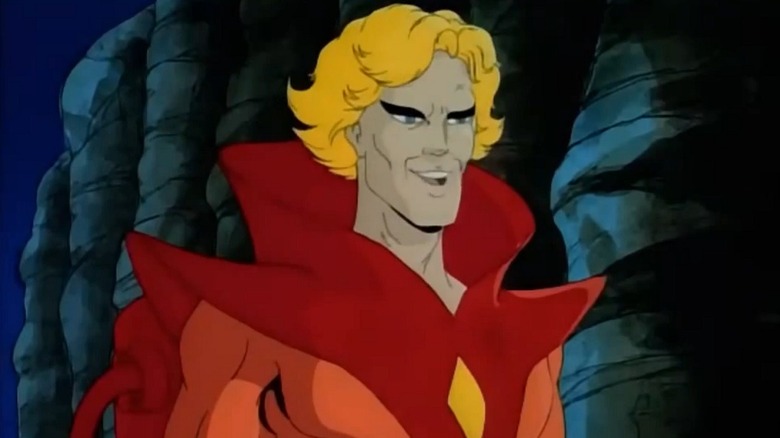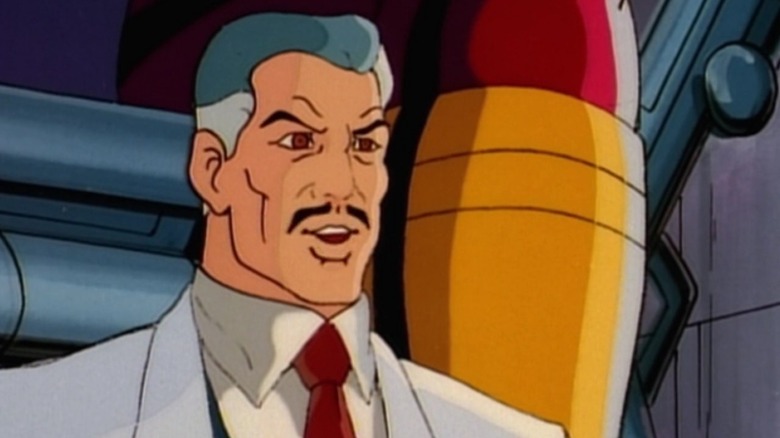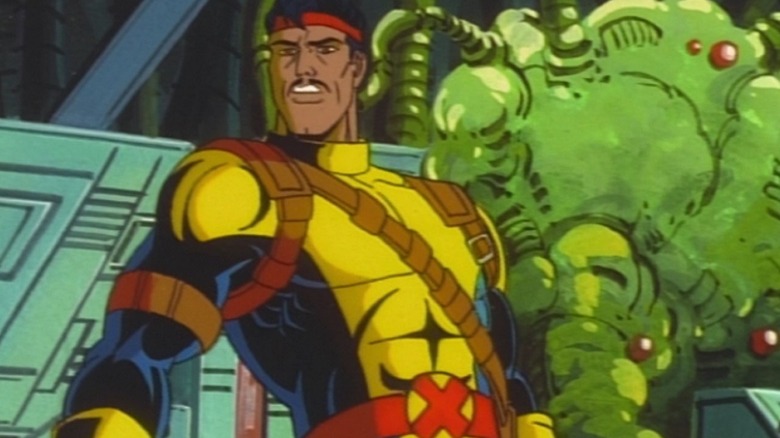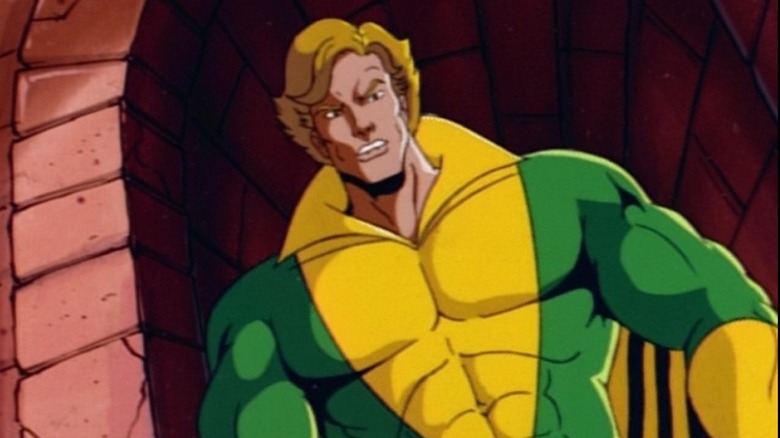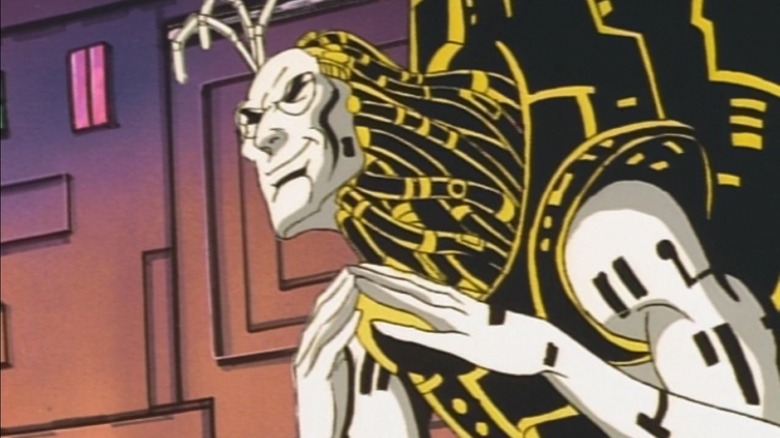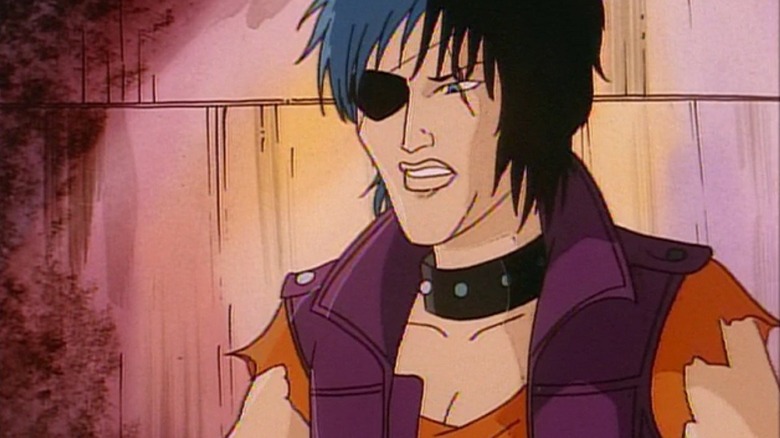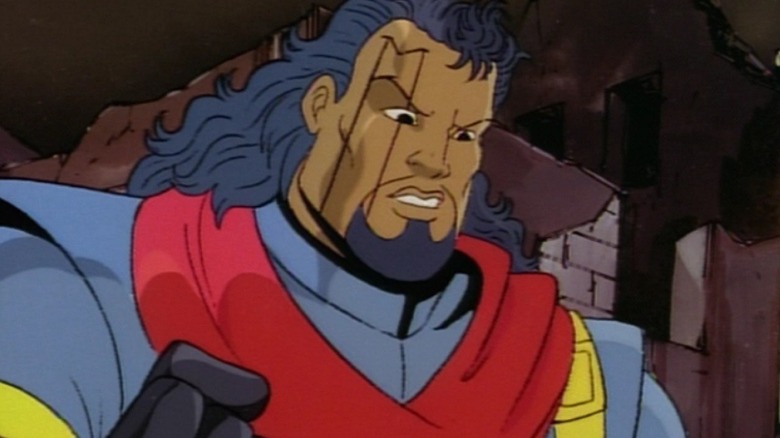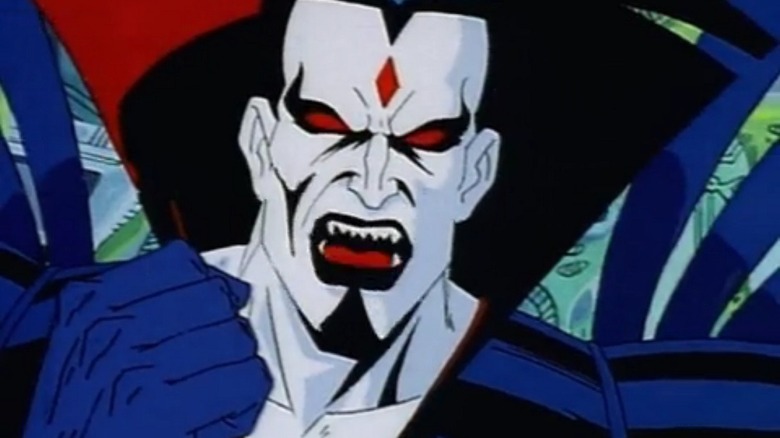The Unsung Characters In X-Men: The Animated Series
Sometimes the best sign of a great comic-based cartoon is in how it exposes audiences to characters they wouldn't have otherwise met. "X-Men: The Animated Series" condensed numerous comic storylines into a handful of episodes, giving even smaller characters the ability to shine with a limited amount of exposure. This isn't as much about mainstay characters on the core team like Cyclops, Jean Grey, and Wolverine, or their primary antagonists, such as Magneto, but those that didn't have a fan base yet. These are the ones that grew from the medium amount of attention they were given.
"X-Men" debuted on October 31, 1992, and ran for 76 episodes. Though it aired for almost five years, it always felt there were more stories to tell, as well as heroes and villains to explore. In many cases, characters were brought in long enough to get fans interested, but took a backseat when the story changed, only to pop up randomly later. Whether it was the incredible voice cast, sharp writing, or magnificent art direction, many of these mutants and villains remained in the minds of the audience, sometimes enough to create new comic book readers. This list is about the lesser-knowns, the characters who benefitted from the show and were treated well, but that may have been forgotten over the 30 years since the show premiered.
Fabian Cortez
Fabian Cortez isn't the type to lead but often plays the power behind the throne. He's manipulative, smarmy, and cunning — his only good qualities. Cortez is at his best in the Season 4 two-part story "Sanctuary," where he helps to elevate Magneto as the savior of all mutants. But it isn't long before he betrays Magneto and frames the X-Men. His plans might not have worked out, but they were sound. These episodes show how dangerous a little charisma and social maneuvering can be. Cortez likes to set up a powder keg, light the match, and walk away.
Although he should have died on Asteroid M, Cortez is rescued by an unlikely pair in Apocalypse and Deathbird. This leads to his third and final appearance, Season 5, Episode 10, ("The Fifth Horseman"), where he attempts to give the evil En Sabah Nur a new body — the X-Men's Jubilee. Cortez's normal mutant ability allows him to amplify the powers of other mutants, but after Apocalypse's alteration, he can now change their mutations as well. With this new power and his commanding presence, he starts a cult and super-charges a group of hounds to help him accomplish this goal, but fails once again. There would be no rescue this time, however, as Apocalypse simply chooses to take Cortez's body as his new vessel instead. This master manipulator's time on screen helped show him as a legitimate threat, while fans witnessed his glorious rise, devastating fall, and terrifying ending.
Henry Peter Gyrich
One of the X-Men's biggest villains throughout the series is a simple one: humans. If it isn't individual bigots, it's their organized hate groups, or the government itself. Mr. Henry Peter Gyrich is a stark representation of that last one, a stooge who answers to the president and isn't liked by any of his colleagues. He's one of the men firmly behind the Sentinel program, as well as the Mutant Control Agency and their mutant registration initiative. His actions are what help to kick off the series, with the two-parter, "Night of the Sentinels." Even with the President of the United States ordering Gyrich to stop, he moves the program to the island of Genosha, determined to wipe out the mutant threat, but not before subjugating them. That leads to the amazing episode "Slave Island," where we see how devious this man's long-term plans truly are.
Gyrich keeps trying too, even after he's thwarted multiple times and kidnapped by the creation of his own making, and never gives up that hatred. There's something to be said for his determination. Each story he's involved in seemingly shows the consequences of where his actions lead him, up until the last story. Not every fan of the show stuck around until the final episode, "Graduation Day," where Gyrich's hatred of mutants has driven him so far as to blatantly attack Professor Xavier on stage, mortally wounding him. The last we see of Gyrich is him getting arrested, failing once more, and still bitter.
Shard Bishop
Shard Bishop is the sister of Lucas Bishop and someone with a brief publication history compared to many other X-Men characters, so it's good to see that she pops up in a handful of episodes here. The time-traveling Xavier Security Enforcers (XSE) member has a distinct look and a stylish costume, with a haircut that doesn't quite work for everyone, but helps her stand out on screen. Shard's time in the show makes her out to be extremely awesome, but also points out that they don't quite have this whole time travel thing down to a fine art yet. She is also, unfortunately, sacrificed to the plot — via Nimrod — but comes back, thanks to the timeline being reset.
This is a character that may seem a bit redundant to some viewers, as we already have a few time jockeys and her power to absorb ambient light and use it as energy blasts is similar to her brother's, but there's more to her than that. Shard has a strong personality that is notably different from Bishop's. In fact, she may even be more focused than her brother when it comes to actually completing missions. There was always the hope of seeing her more, giving Shard some of her wilder stories from the comics, but even without those, she's still a solid side character. Not only does she help add to Bishop's backstory, but she also manages to stand on her own during one of the X-Men's most notable adventures.
Pyro
Sometimes a codename spells out everything we need to know about a character, and that's almost true for someone like Pyro, but he's also tons of fun. It's probably good that he doesn't try to go by his real name, St. John Allerdyce. For someone with the power of pyrokinesis, the choice seems obvious. Thankfully, he isn't too one-note past that. Allerdyce may not be the brightest match in the box, but he isn't too dumb to figure out what is going on around him. His desire to do crime and make money leads him to Mystique and her Brotherhood of Mutants, but that doesn't mean Pyro isn't willing to try his own plans on occasion, even if that requires bungling into someone else's. This course of action often leads him into confrontations with the X-Men, and usually sees him being defeated handily.
Allerdyce also might talk too much, letting his mouth get him in trouble, like when he calls Cable "darling." Though this cartoon makes him sound more British and has him throwing out several extensive quotes and colloquial sayings, Pyro is actually Australian. He's often seen with his buddy Avalanche, and together, they make a pair of goons-for-hire that everyone enjoys seeing get beat up. Pyro's best moments are when he shows off his creativity with the fire he manipulates, creating giant shapes and large beasts to fight. He makes for an entertaining speedbump to slow down our heroes, and his charm helps him stand out in the show.
Bolivar Trask
Bolivar Trask is the man who creates one of the X-Men's most iconic enemies, the Sentinels. He's the genius that constructs the robots as a precaution, making sure the mutants can't challenge humanity. His Sentinels are perfect hunting machines, but there are hints that Trask didn't intend for them to be an extermination squad. In the Season 1 episode "Night of the Sentinels, Part Two" he argues with his partner, Henry Gyrich, about how to proceed with the program. This is a character who is scared for the future of his people, making irrational decisions based on fear, but he does show some signs of sympathy.
Later in the series, Trask creates Master Mold in an attempt to not only produce more Sentinels but help organize them as well. It isn't long, however, before Master Mold turns on his creators and notes to Trask that to him, humans and mutants are the same, and they are both his enemies. This is when Trask acts against his own construct, but it isn't the last time Master Mold would harass him. In Season 4, Episode 3 ("Courage"), the Sentinel-making giant is now just a head and is in need of a new body, so he kidnaps Gyrich and Trask, who are hiding from their own monster. We know Gyrich holds onto his hatred, but there's hope that Trask can be the other side of that story, someone who stops trying to hurt the mutants that have saved his life multiple times.
Forge
This mysterious mutant is a Native American from the Cheyenne tribe who was also originally a shaman, but the cartoon focuses more on his work as an inventor and leader. Though he is not officially with the X-Men, he often aids them or others close to the group. He is seen later in the show as the leader of X-Factor, letting his team throw down with Xavier's students to help test them. Forge stands out amongst his peers in appearance, partially because he is missing his right hand and leg, which are replaced with machine prosthetics. These are the first hints to Forge's mutant abilities, which can be tough to define, but help make him an incredible inventor. His greatest creation during the course of the show is likely the time machine that the other characters use.
One of the intriguing things about the character is that he is different almost every time we meet him. In most of his appearances, the timeline is altered in some form, leading to slight changes. In one instance, he also has Wolverine's adamantium skeleton in his lab to show how events have changed, and in another, we see that things are even worse and all of his body except his head is replaced with robotic parts. We see various levels of his desire to fight for the future and witness him sacrificing himself, showing off the character's range.
Banshee
That piercing scream coming through the sky isn't a creature of folklore, but rather the Irish-born mutant known as Banshee, who has no trouble living up to that name. Sean Cassidy isn't given too much backstory here, but he sees a lot of action whenever the team heads to Muir Island. For a character with a smaller role, Cassidy makes his way into some of the group's more notable adventures, such as "The Phoenix Saga" and "Phalanx Covenant." We assume he is intelligent and potentially has a background in science, as he is assisting his girlfriend, Moira MacTaggert, with her genetic research. When he isn't helping fight alongside the X-Men or saving Xavier's life, the story takes a moment to focus on his personal relationships.
Along with Moira, there is his brother, Black Tom Cassidy (though they are cousins in the comics), who holds a grudge against him. In Season 3, Episode 5 ("Cry of the Banshee"), we see them fight, and it's revealed that their powers don't affect each other, which seems true for almost all mutant siblings. This is an interesting glance into the Cassidy family quarrels and left viewers wanting more. On an interesting note, fans could see this version of Banshee again, outside of the cartoon, and in live action. The actor who voices Banshee in "X-Men," Jeremy Ratchford, went on to portray the mutant headmaster in the "Generation X" movie from 1996. In both versions, no one wants to hear this man sing.
Cameron Hodge
This is a doubly evil character, as Cameron Hodge is not only an anti-mutant lobbyist but a politician as well. He's first seen as a stooge, the development advisor to the Genoshan government, following around an unsavory man who insists on being called Leader. His actions here are cruel, but also brave enough to almost shoot Cable in the back. Choosing this path also cost him dearly, in the form of two limbs. After his run-ins with the X-Men during the "Slave Island" episode, Hodge joins a group within the government looking for UFOs and eventually discovers the Phalanx. These techno-aliens offer him power and give Hodge back his missing arm and leg — all he has to do is betray humanity and help this collective conquer Earth. As Professor Xavier points out, it's hard to tell if assimilation stripped away his humanity, or if Hodge never had any to begin with.
Hodge's transformation from a low-ranking bigot to the face of a conquering race is impressive, and obviously, this makes him much more of a threat, as well as an intriguing villain. We see this come to an appropriate ending in Season 5's "Phalanx Covenant, Part Two," when he loses these new abilities and is turned back into a human with his metal arm and leg. Though this is a satisfying conclusion for the character, watching this tertiary bad guy rise and fall gloriously, it is a shame fans didn't get to witness his rivalry with Warren Worthington from the comics.
Callisto
Not every mutant can be a part of the X-Men. Charles Xavier is known as a philanthropist for his people, but that doesn't mean he's willing to help everyone. Callisto is the leader of a mutant group known as the Morlocks, those who have more trouble passing for normal or don't want to live among the humans that hate them. She's a fierce leader, a skilled fighter, and her mutant abilities of enhanced senses give her several tactical advantages. Callisto is strong, fast, and heals quickly, but more importantly, she has a handful of powerful people among her outcasts that will die for her.
In her biggest story, Callisto kidnaps Cyclops and Jean Grey with the intent of keeping Scott Summers as a companion to rule alongside her. Season 1, Episode 5 ("Captive Hearts"), was ripped straight from the comics, but in that, it's actually Angel who Callisto becomes obsessed with. This story exposes new fans to the sewer-dwelling mutant society and shows their alignment. Callisto loses her leadership position to Storm but is left in charge in the Weather Witch's stead because Storm sees something in her. The Morlocks often found themselves in trouble in the other episodes they appeared in, and then in a Christmas tale, only for Storm to eventually relinquish leadership back to Callisto. The character comes full circle, with a small bit of growth mixed in there, but she, and her punk-rock look, are used to show a different side of the mutant struggle.
Lucas Bishop
The man known as Bishop exudes a certain level of cool. The whole bounty hunter vibe along with the time jockey storyline instantly makes him a top guy, not to mention his sweet-looking weapon and being able to pull off the neckerchief accessory. There's also the iconic M tattoo over his eye — the branding mutants received in his alternate future — which certainly helps fans identify the character. For many, Bishop was also one of the few African American comic book heroes they had been exposed to, so seeing him re-appear across several storylines was incredible. His ability to absorb energy, change it, and redirect the blasts at enemies makes him fun to use in fights and means that Bishop can take plenty of punishment and keep coming back.
Bishop traveling back and forth, trying to change the timeline without all of the facts, always makes for exciting adventures. Though he often succeeds in his goal, viewers see him constantly needing to change more or adjust his own actions. This element ensures his characterization never grows too stale and leaves fans wanting more. By the end of the series, Bishop deals with the Axis of Time, secretly meets Immortus, and helps save the day in one of the biggest multi-part story arcs. It's a journey that shows his progression and the value he now has to the team, considering they once forced him to go back to the future the hard way.
Mister Sinister
He's not as notable as villains like Apocalypse overall, but there's no denying the impression Mister Sinister has on this show. The cartoon adaptation exposes many new fans to this cruel and calculating menace. Season 5, Episode 12 ("Descent"), explores the origins of Dr. Nathaniel Essex and his ties to the past. Before that, however, Sinister was obsessed with the X-Men's favorite couple, Scott Summers and Jean Grey. His background in genetics and work with mutant DNA helps in his goal of creating more potent X-genes and enhancing his own powers. Sinister always seems to make it personal. Nothing shows that as much as using Morph, a beloved character, to twist the other X-Men for his schemes.
He's a skilled manipulator, tricking many heroes into his traps, even Xavier and Magneto. Sinister is also rarely alone. Although he has his own mutant powers — energy blasts, and an extreme healing factor that allows him to regenerate from being blown to small bits — his real ability is creating strong allies and amplifying them. Not only does he control the Mutates in the Savage Land, but he has the Nasty Boys at the ready as well. Though he's the threat that normally lurks in the shadows, Sinister does understand self-preservation and helps the X-Men against the Phalanx, since his work would be hurt by the aliens taking over. His motivations, methods, signature look, and voice has helped make him an enduring villain.
